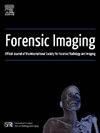Stature estimation and craniometry–a computed tomography scan based study in South Indian adult population
IF 1
Q4 RADIOLOGY, NUCLEAR MEDICINE & MEDICAL IMAGING
引用次数: 0
Abstract
Background
Stature estimation contributes to the identification of an individual which is one of the objectives of a medicolegal autopsy. Stature can be estimated by measuring various landmarks of the cranium. Owing to the geographical variations, the regression formula used for one population may not be applicable to other populations. This CT scan study was conducted with an aim to develop regression formulas for the different cranial parameters in a South Indian adult population.
Methodology
511 patients scheduled for elective CT scans of the head and neck were recruited. Twenty-nine cranial variables were studied in each of these patients. Simple and multivariate linear regression was performed to establish a predictive stature estimation model. Pearson correlation and the predictive stature estimation model were considered significant if the P value was ≤ 0.05.
Results
All the cranial measurements showed a statistically significant correlation with stature in the overall population except for right orbital height, left orbital height and minimum distance between the condyles. The proportion of variance of stature explained by the model was found to be 27 % for the overall population, whereas it was 20 % and 21 % respectively for the males and females.
Conclusion
Our results suggest that the studied cranial measurements have a positive correlation with stature and can be used to estimate the stature, but the R2 values are not so encouraging.

身高估计和颅部测量-一项基于南印度成年人的计算机断层扫描研究
身高估计有助于识别个体,这是法医尸检的目标之一。身高可以通过测量头盖骨的各种标志来估计。由于地理上的差异,用于一个人口的回归公式可能不适用于其他人口。本CT扫描研究进行的目的是开发回归公式的不同颅参数在印度南部的成年人人口。方法招募511例计划择期进行头部和颈部CT扫描的患者。在这些患者中研究了29个颅变量。采用简单线性回归和多元线性回归建立了预测身高的模型。如果P值≤0.05,则认为Pearson相关性和预测身高估计模型显著。结果除右眼眶高度、左眼眶高度和髁间最小距离外,所有颅骨测量值与总体人群身高均有统计学意义。该模型解释的身高差异比例在总人口中为27%,而在男性和女性中分别为20%和21%。结论颅骨尺寸与身高呈正相关,可用于身高的估计,但R2值并不理想。
本文章由计算机程序翻译,如有差异,请以英文原文为准。
求助全文
约1分钟内获得全文
求助全文
来源期刊

Forensic Imaging
RADIOLOGY, NUCLEAR MEDICINE & MEDICAL IMAGING-
CiteScore
2.20
自引率
27.30%
发文量
39
 求助内容:
求助内容: 应助结果提醒方式:
应助结果提醒方式:


